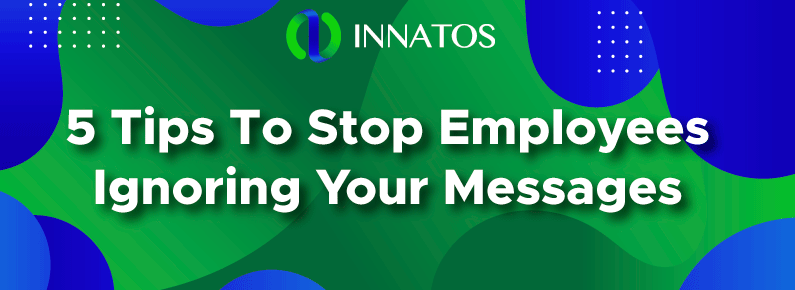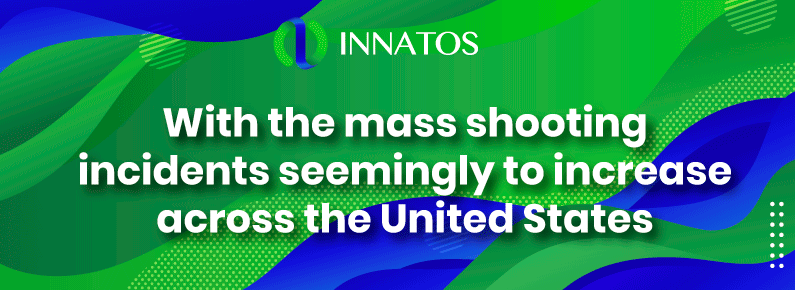5 Tips To Stop Employees Ignoring Your Messages
Information overload is a challenge that many organizations around the world have to overcome in order to communicate effectively with their employees. Regardless of industry, the modern world means that employees have more competing information sources than ever before, across more channels, all vying for their attention both at work and in their private lives. People can become overwhelmed by too much information and, as a result, may miss messages entirely.
Email overload is one example of this, where people receive more messages in their inboxes in a day than they are able to open, read and respond to. Important information can be missed, and this can have negative consequences for the business. Successful communication is essential for good business outcomes. Keeping all employees successfully informed means that everyone is on the same page and can work as a team striving towards the same outcomes and objectives, important directives are given, fewer mistakes are made, and trust and accountability can exist in relationships with other stakeholders.
Many organizations consider alerting software as an option overcome information overload. There are a number of different alerting software systems on the market, usually based on sending pop-up notifications to employees’ computer screens. The messages are designed to be seen in an obtrusive way appearing regardless of what other computer task the employee is engaged in at the time, and can’t be skipped, ignored or minimized.
Avoiding alert fatigue
But even with an alerting system in place, how can you be sure that your employees don’t get “alert fatigue”? What happens when they become used to seeing the pop-up appear on their screens when they are busy and they click out of the pop-up or minimize it without actually reading the content?
Perhaps when alerts are regular, people can become complacent and won’t read them properly because they jump to conclusions and assume they know what the alert will say without reading it.
This is exactly what happened to one big hospital with more than 132,000 inpatient and day surgery cases and more than 580,000 outpatient appointments every year. The hospital uses alerting software on their computers because they need to attract peoples’ attention to critical information. However, they deliberately limit the usage in order to prevent alert fatigue.
Management began complaining about staff ignoring their alerts, and they did not know how to solve the problem. So they investigated potential solutions. Here are five ways they could overcome alert fatigue with internal communication software.
1. Use different skins for different topics
 Create “skins” for your pop-up notifications. These are pre-defined designs you can select when sending a notification to your employees. Skins can take on different looks and can be aligned to your own corporate branding. Many companies use different skins on their messages as part of their communications strategies that involve different skins for different types of messages.
Create “skins” for your pop-up notifications. These are pre-defined designs you can select when sending a notification to your employees. Skins can take on different looks and can be aligned to your own corporate branding. Many companies use different skins on their messages as part of their communications strategies that involve different skins for different types of messages.
For example, different colored skins can indicate different types of urgency and severity in the messaging. Red colors, for example, can be used for notifications about emergencies or other critical situations that require employees to act immediately. Green colors may be used for less important ones. You could also have different designs for different topics such as staff education and training, corporate events, inventory, payroll, and so on. Specific skins could also be designed to reflect any external communications and marketing campaigns that your organization is running. For example to communicate in the lead up to and during a new product launch, or about a new branding exercise. Employees will understand straight away if they need to pay attention to this message right now or can do it later. And the most urgent alerts will not be ignored.
2. Use different skins for different sources of information
Different colors and designs could also differentiate between the departments sending notifications, or just to differentiate between topics. For example, you could have different designs for messages sent from management, IT, HR or anyone else within your company who may send alerts to employees. People will easily be able to determine who or which department sent the alerts, and will act accordingly. Some alert systems, e.g. DeskAlerts, can be integrated, via an API, with many other systems that companies use in various industries so that messages from these systems are broadcast to staff. When integrating with these systems a custom skin could be developed to make messages from that source easily identifiable.
3. Use scrolling tickers
Scrolling tickers are a moving band of text, like a ticker that appears on news broadcasts on television, containing information about various topics. You can help to prevent alert fatigue by having policies in place about which types of messages are severe/important enough to be sent by pop-up notification and placing all other types of employee communications on a scrolling ticker. This might include things like minor disruptions or situation updates – people are not disrupted by the alert and therefore are less likely to have alert fatigue. Moreover, they are used to the new tickers, and that is why they will intuitively understand the nature of such messages.
4. Alerts that block the screen
 This option should only be used in exceptional circumstances but has a mechanism where an alert can block an employee’s entire screen so they can’t easily click out of it. These alerts block the screen for a whole minute and the computer cannot be used for anything else during that time. It can be used during an emergency situation, for example, when you need people to pay attention because lives and safety are at risk.
This option should only be used in exceptional circumstances but has a mechanism where an alert can block an employee’s entire screen so they can’t easily click out of it. These alerts block the screen for a whole minute and the computer cannot be used for anything else during that time. It can be used during an emergency situation, for example, when you need people to pay attention because lives and safety are at risk.
Another way it can be used is as a weapon against phishing attacks – when something malicious is received by the user that the firewall has failed to catch you can send full-screen alerts with a message such as “DO NOT CLICK THIS” – saving your entire organization from potential infection. There are always lots of interruptions throughout the working day – a whole minute in the scheme of things is worth it, particularly when the reason for locking the computer is to avoid negative consequences.
5. Pay attention to what your messages say
Communicating for the sake of communicating on any medium, let alone an alerting channel, is not good practice. Your communications should have a clear objective and be necessary. If they contain irrelevant information or are written in such a way that it is hard for the employee to understand, you run the risk of losing their interest when they receive future messages. For example, in the case of the hospital, when they clearly understand – more does not mean better, and limiting the use of alerts only to cases where important information needed to be shared was evident.









Leave a Reply
Want to join the discussion?Feel free to contribute!